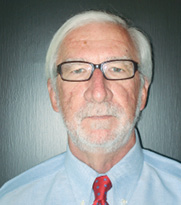Unprecedented commodity prices that have led to a sustained demand for agricultural equipment over the past 4 years have resulted in two types of regrettable sales techniques. First, because many end-users are flush with cash, many sales people in turn believe they can be successful by just sitting in the dealership and waiting for their next victim to “waltz” through the door. Unfortunately, this has proven true in many instances. This does not build lasting relationships and will not survive the next downturn, and neither will the sales personnel who engage in such selling techniques.
The second type of regrettable sales technique is the one that focuses, almost exclusively, on the rollover purchaser. These customers are invariably large volume, low margin, very demanding purchasers who will generally switch dealerships, if not brands, to save a few pennies. But because of the need to fulfill the manufacturer’s demand for market share, and because of the volume bonus associated with such a sale, many dealers and their sales force continue to pursue these low margin transactions. Like the previous example, these transactions are “generally” (please note that this is a generalization) not based on a lasting relationship, but rather on who has the lowest price.
Dealers and their sales force in this business for the long haul would be wise to minimize both of the above scenarios and, instead, focus on building relationships with their customer base that will continue to prosper over time. A sales strategy based on market share should be replaced with one that focuses on customer share while low margin transactions should be eschewed in favor of those that yield a meaningful gross margin. To accomplish this transformation will require the dealership sales force to focus like a laser on their individual customer base rather than cherry-picking walk-in customers or dropping prices to “demanding” rollover customers.
“Any given sales territory can be stratified into 5 categories...”
Any given sales territory can be stratified into 5 meaningful categories. The first category of potential purchasers is comprised of suspects. Suspects represent the base level of end-users in the market place. Within an agricultural market, these end-users are subsistence farmers that lack the wherewithal to purchase any meaningful amount of equipment. Similarly, because they are hard-scrabble farmers that generally possess a fair degree of mechanical aptitude, they also will work on their own machines rather than spend the dollars necessary to have a dealership service technician undertake the work. While this category generally makes up to 50% of a given territory potential, they will generate little dealership business other than the occasional parts business. As a result, little time or effort should be expended with this group of end-users.
The next category of potential purchasers can be classified as prospects. These are those end-users that, after a thorough and comprehensive profile, are deemed capable of purchasing goods and services from the dealership. If suspects constitute nearly 50% of a given territory, then prospects account for the remaining 50% of potential purchasers. Only these potential purchasers are deemed credit worthy and financially capable of making purchases based on various buying motives. In a new territory, this is where a pioneering salesperson starts.
In an established territory, however, where sales have been recorded, end-users should be classified into A, B, and C customers; or Partners, Customers and Accounts. C customers, or Accounts, represent those end-users who have previously purchased a product or service from the dealership. Purchases have either been sporadic or small in nature. Although the C customers will generally account for only about 15% of the machinery purchasers in any given year, they nevertheless deserve to be called on throughout the year.
B customers, or Customers, represent those end-users who demonstrate a pattern of continued purchases over time. This group will represent about 20% of the purchasers and account for 20% of the sales. This group of end-users should be called on more frequently than the C customers, but not as frequently as the A customers.
A customers, or Partners, represent the ultimate level of accounts that purchase exclusively from a specific dealership and/or salesperson. Not only do they purchase exclusively, but they also permit the selling entity to earn a fair gross margin. With these accounts, the salesperson is truly a consultant, rather than a traditional “iron peddler.” Common sense would suggest that this group be called on even more frequently than the preceding group.
Rather than cherry-picking sales from price shopping customers or pursuing rollover accounts, sales personnel would be better off spending their time seeking to increase their A, B and C customers’ sales and gross margin dollars. The necessary steps to increasing customer share begin with stratifying the territory; then segmenting the customers; and finally, by establishing a call schedule based on past and future purchases. Once undertaken, a program to solidify customer share should be implemented. This will be the topic of next month’s column.






